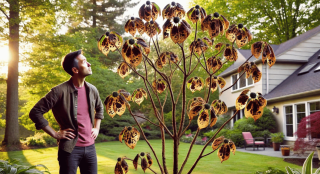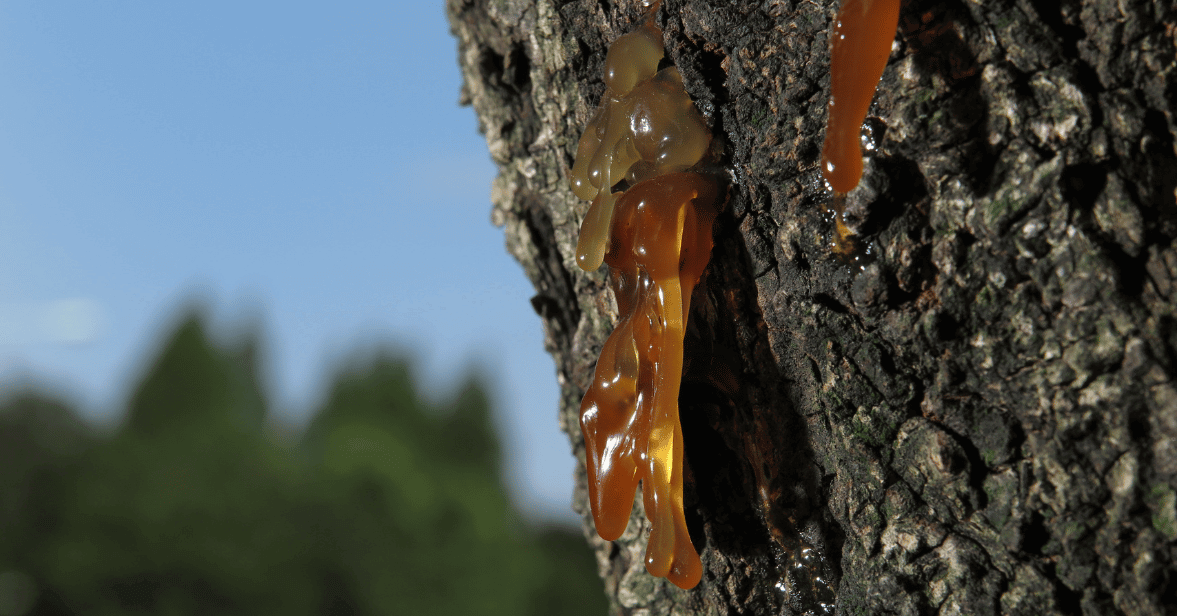Dogwood trees are known for their beauty. In the spring, they bloom with stunning white or pink flowers. But like many trees, they can be affected by diseases. One common problem is a fungus called dogwood anthracnose.
Dogwood anthracnose is a serious issue. It can cause damage to your tree and even lead to its death if left untreated. But the good news is that there are ways to identify and treat the disease. In this article, we’ll walk you through how to spot dogwood anthracnose and what you can do to save your tree.
What is Dogwood Anthracnose?
Dogwood anthracnose is a fungal disease caused by a fungus called Discula destructive. This fungus thrives in cool, wet conditions and affects both the leaves and branches of dogwood trees.
The disease spreads through rain and wind. It can also spread through infected plants. Once a tree is infected, the fungus can quickly take over, significantly if the tree is already weakened by stress or poor conditions.
How to Identify Dogwood Tree Fungus
Early identification is key to saving your tree. The first step in dogwood anthracnose treatment is knowing what to look for. Here are some signs that your dogwood tree may be infected with anthracnose:
- Spotted Leaves: Look for small, tan or brown spots on the leaves. These spots often have a dark or purple border.
- Wilted Leaves: The leaves may appear wilted or curled. They may also develop blotches, turn brown, and fall off prematurely.
- Branch Dieback: Anthracnose can cause branches to die back, starting from the tips. This means the ends of the branches may look dead or bare.
- Cankers on the Bark: You might see sunken areas or lesions on the bark, especially on the lower branches. These are called cankers and are a sign the disease is spreading into the wood.
- Poor Flowering: Infected dogwood trees may not bloom as fully as healthy ones. Flowers may be fewer in number and smaller in size.
If you see any of these signs, it’s important to act fast. The sooner you start treatment, the better the chances of saving your tree.
Dogwood Anthracnose Treatment Options
Once you’ve identified the problem, it’s time to take action. Here are the best ways to treat dogwood anthracnose and prevent further damage:
Pruning Infected Branches
The first step in dogwood anthracnose treatment is to prune away infected branches. This helps stop the spread of the fungus. Use clean, sharp pruning shears and make sure to cut at least 6 inches below the affected area. Dispose of the infected branches far from your tree to prevent re-infection.
Fungicide Application
Fungicides can be very effective in treating dogwood anthracnose. Look for a fungicide that is labeled for treating anthracnose. You should apply it in early spring, just as the leaves are beginning to bud. Follow the instructions on the label for the best results. Repeat applications may be necessary, especially if the weather is cool and wet.
Improve Air Circulation
Dogwood anthracnose thrives in moist conditions. Improving air circulation around your tree can help reduce the spread of the fungus. Prune nearby plants and shrubs that may be crowding the tree. This allows more air to flow around the leaves and branches, keeping them dry.
Water Properly
When watering your dogwood tree, avoid getting the leaves wet. Water at the base of the tree instead. Wet leaves can encourage the growth of fungi like anthracnose. Deep watering is better than frequent, shallow watering.
Mulch and Fertilize
Healthy trees are better able to fight off diseases. Mulching around the base of your dogwood can help retain moisture in the soil and protect the roots. Use an organic mulch, like wood chips or bark, and spread it in a 2 to 3-inch layer.
Fertilizing your dogwood can also give it the nutrients it needs to stay strong. Apply a balanced fertilizer in the spring to promote healthy growth.
Remove Fallen Leaves
Fallen leaves can harbor the anthracnose fungus. Be sure to clean up any leaves that fall from your tree, especially if they show signs of infection. Removing these leaves will help reduce the chance of the fungus spreading back to your tree.
How to Prevent Dogwood Anthracnose
Prevention is always better than cure. Here are some tips to help keep your dogwood tree healthy and free from anthracnose:
- Plant in the Right Spot: Dogwoods prefer well-drained soil and partial shade. Avoid planting them in areas with poor air circulation or in low water collection spots.
- Maintain Tree Health: Regularly inspect your tree for signs of disease. Keep the soil around your tree healthy by mulching and fertilizing as needed.
- Avoid Overwatering: Water your dogwood only when necessary. Too much moisture can create the perfect environment for fungal diseases.
- Prune Regularly: Regular pruning helps improve air circulation and keeps your tree healthy.
If you’re unsure whether your dogwood tree is infected or need help with treatment, it’s always a good idea to call in the professionals. At Strobert Tree Services, our certified arborists are trained in dogwood tree fungus identification and treatment.
We can provide a free health assessment of your tree to determine the best course of action. Whether you need pruning, fungicide treatment, or general tree care, we’re here to help.
Don’t Wait—Contact Strobert Tree Services Today!
Dogwood anthracnose is a serious disease, but your tree can recover and thrive with the right care. If you think your tree may be infected, don’t wait until it’s too late. Contact Strobert Tree Services today for expert dogwood anthracnose treatment.
We serve Delaware, Pennsylvania, and New Jersey; our certified arborists are ready to help protect your trees. Call us now to schedule your free tree health assessment!
By following these steps and getting professional help when needed, you can help your dogwood trees stay healthy and beautiful for years to come.
Our certified arborists provide a free health assessment in Delaware, PA, and New Jersey. Let us help you protect your dogwood trees!











